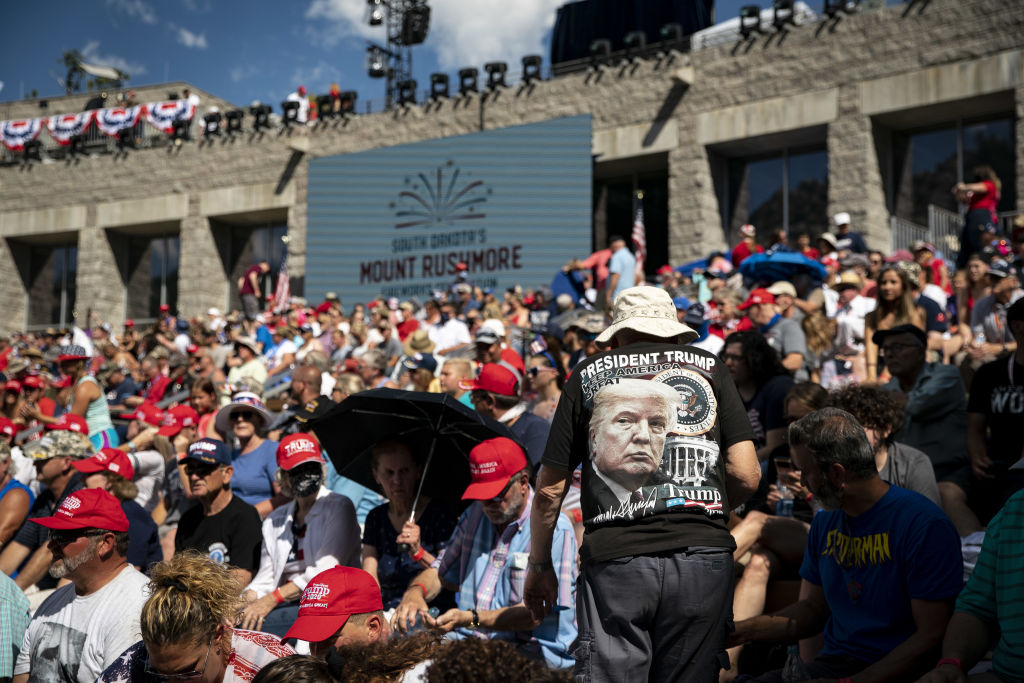
If you’re American, you can be forgiven if you didn’t particularly feel like celebrating your country during this year’s Fourth of July holiday. If you’re not, your feelings toward the U.S., whether pity or schadenfreude, are understandable.
The majority of the other early epicenters of the pandemic have largely figured this out, their curves crashing downwards and a sense of optimism returning and civic pride growing. But the U.S., despite being perhaps the nation best prepared to handle a pandemic of this scale and scope, has epically foundered. On July 2, the U.S. tallied over 50,000 new daily cases for the first time. That number was shortly passed the following day, when 54,461 cases were recorded. Whatever gains had been made in May and June have been wiped out, and then some.
The canonical telling of this tale of defeat won’t be told until all is said and done, but there’s no doubt that some of the blame can be placed on the politicization of the pandemic. Just consider the events of this Fourth of July holiday. Overall, it was a subdued Independence Day celebration; the New York Times estimated that some 80% of holiday fireworks displays were canceled this year, as officials deemed the public gatherings extraneous and potentially dangerous in the midst of a pandemic.
President Donald Trump, however, organized not one but three public events over the weekend: the first a fireworks display and Air Force One flyover at Mt. Rushmore in South Dakota on July 3, the second at the White House South Lawn on July 4, and the third a fireworks and air show at the National Mall later that evening. Reports in Voice of America and the Times, respectively, note that most of the crowds at the Mt. Rushmore and South Lawn events were maskless and made little to no effort to socially distance. Trump himself continues not to wear a mask in public, despite calls coming from even inside his own political party to do so.
At the South Dakota event—on the same day the U.S. had its worst day yet in terms of new cases—Trump mentioned the worsening pandemic just a single time, to thank “our wonderful veterans, law enforcement, first responders, and the doctors, nurses, and scientists working tirelessly to kill the virus.” Instead, he spent most of the speech stoking divisiveness, denigrating and falsely characterizing the many Americans who have been calling for a reconsideration of how slaveholding politicians, businessmen, and, especially, the leaders of Confederacy are portrayed in public monuments, school curricula and more. “Make no mistake: this left-wing cultural revolution is designed to overthrow the American Revolution,” he said.
At the South Lawn event Trump spent more time on the pandemic, but continued to present misleading claims about the virus and the U.S. response. The most egregious and most confounding was when he stated without evidence that 99% of cases in the U.S. are “totally harmless.” While it is true that many who are infected do not show symptoms, based on current numbers, 4.57% of American COVID-19 patients have died, and that doesn’t take into account the many more who have had symptoms ranging from flu-like to extremely serious and requiring hospitalization.
These false minimalizations of the impact of the virus have been the lingua franca of the Trump Administration since day one. That’s because his primary concern is and has always been the economy, as gauged by traditional metrics like the stock market and gross national product; COVID-19 was from the start a clear threat to the health of the U.S. economy, and has proven to be even worse than most expected on that front. By pushing the false narratives that the virus isn’t dangerous, that masks don’t help, and that cases are only going up because testing is going up, Trump emboldened local Republican leaders to reopen their economies too soon, and now the chickens have come home to roost.
And yet, Trump still does not seem to understand—or is willfully ignoring—the seriousness of those grisly outcomes. However, it may be that Americans are fed up with the ongoing—and embarrassing—failures to contain COVID-19. A Pew Research Center poll published June 30 found that 71% of Americans surveyed are angry about the state of the country these days, and a full 87% said they are now dissatisfied with “the way things are going in the country.” The most shocking part of this is that the share of Republicans who feel this way has surged from 45% in April to 81% in June, when the survey was taken.
Of course, this doesn’t translate into 87% of Americans agreeing to abide by the guidelines public health experts suggest are needed to get the U.S. back on track in containing the pandemic, but perhaps it suggests more are willing to listen than before, even if it means overcoming the treacherous political division that brought us here in the first place.
More Must-Reads from TIME
- Cybersecurity Experts Are Sounding the Alarm on DOGE
- Meet the 2025 Women of the Year
- The Harsh Truth About Disability Inclusion
- Why Do More Young Adults Have Cancer?
- Colman Domingo Leads With Radical Love
- How to Get Better at Doing Things Alone
- Michelle Zauner Stares Down the Darkness
Contact us at letters@time.com